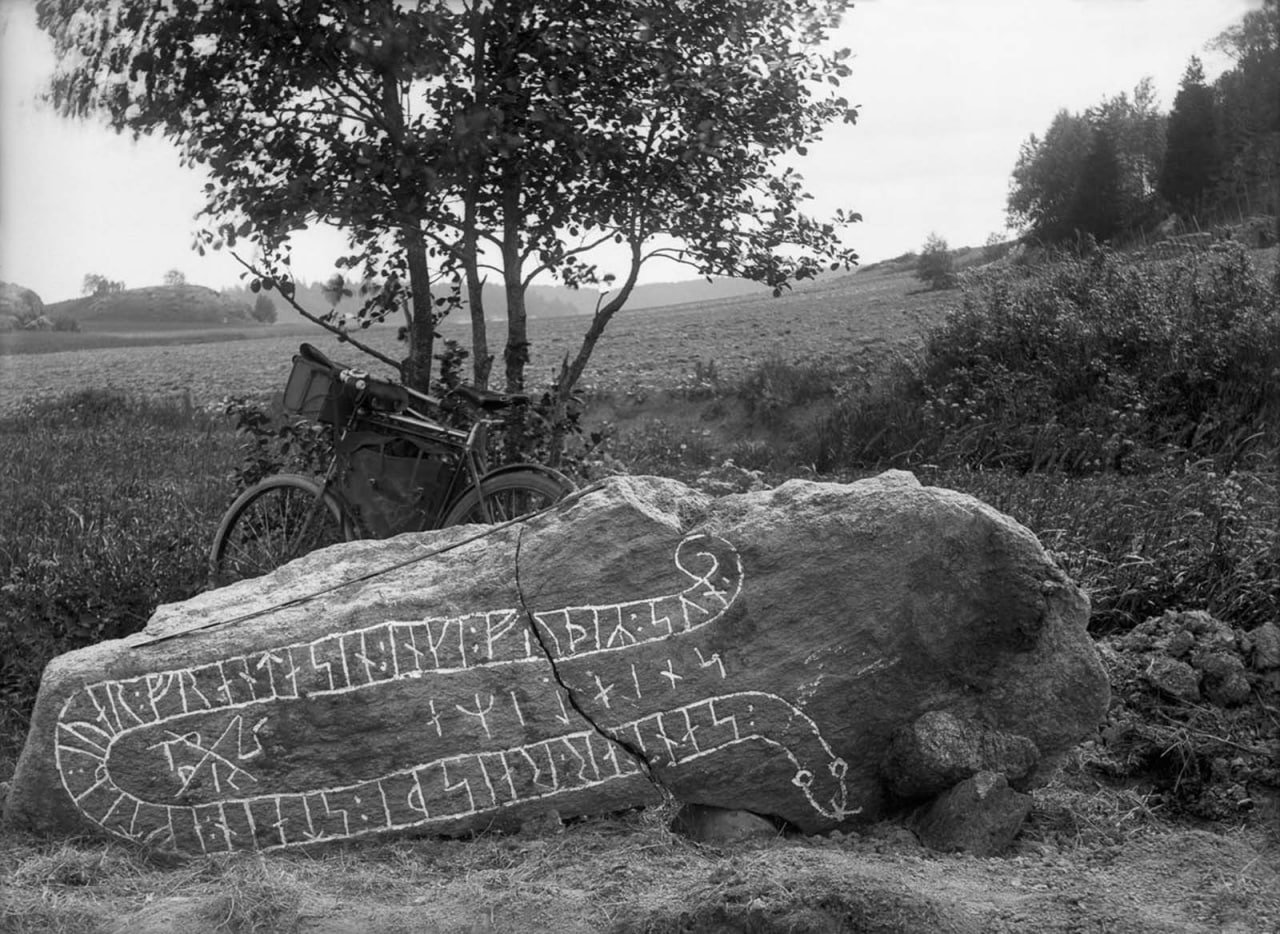
A Fallen Runestone at Korpbron in Juresta, Sweden 1899
The Importance of Runestones
Runestones are some of the most iconic objects in all of Europe. Their depictions of Knotwork, Wyrms, Gods and Men decorated with those mysterious marks known as Runes; which inspire art and speculation among the academically minded and the average populace to this day.
Yet most Runestones, if not all, serve a rather familiar and heartwarming purpose. They are memorials to the dead, what are sometimes called Wayside Shrines.
-For example the one pictured above reads :“Sandar raised the stone in memory of Joar, his kinsman. No one will bear a more able son. May Tor safeguard.”-
Many of the Runestones are attributed specifically to the commissioners beloved dead whether they be Fathers, Mothers, Siblings, other Kinsmen or Companions. Due to many of the extant stones being from the Viking Age -Which many people are aware of- they are often Christian in reference invoking the The Christian God -Which most people are unaware of-, though one fallen stone photographed in 1899 specifically calls on the god Tor to safeguard the soul of the dead.
Some of the most famous Runestones have depictions of deities such as the Jelling Stones which depict a Crucified Jesus Christ entwined in knotwork. While the Hunnestad Monument is often thought to depict Hyrrokin, a Norse Giantess and speculated funerary deity. Both monumental sets of Runestones were placed as a way to honor dead loved ones.
These days we don't commonly raise Runestones in honor of our loved ones, or even the standing stones of Pre-Christian Europe... Yet... We still perform this treasured act of honoring the dead. Park Benches, Street Signs, Crosses at the side of the Road and Grand Statues show the names and faces of loved ones that have passed on to the realms beyond.
The reason for all of this really is quite simple; never has something been more treasured to our people and our Gods, than our family and friends.
